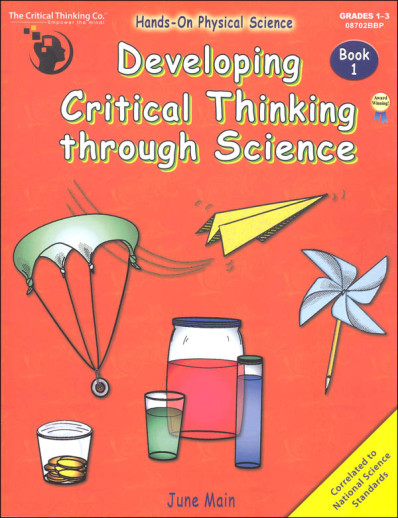We use cookies to make your experience better. To comply with the new e-Privacy directive, we need to ask for your consent to set the cookies. Learn more.
Developing Critical Thinking Through Science Book 1
Covers Observations with the Senses; Classification According to Properties; Properties of Matter - solid, liquid, or gas; Forces - causing change, rolling, measuring; Properties of Air - air as moving wind, air takes up space; Properties of Water - evaporation, water pressure; Buoyancy - in liquids, in air; Sound - vibrations, listening in the classroom; Light - shadows, reflection; Heat and Temperature; Combustion - safety precautions, burning time of materials, and volume of air. 41 reproducible lessons, 143 pgs.
Preparation time is short, and most materials can be found around the classroom. Step-by-step procedures, questions, answer guidelines, and clear illustrations are provided. Practical applications at the end of each activity relate science concepts to real-life experiences. These activities can be used successfully with a minimum of science knowledge, preparation time, and science equipment.
Developing Critical Thinking through Science is based on the premise that students apply thinking skills to learning science concepts and principles by:
Doing through direct, firsthand experiences in an interactive, open atmosphere;
Constructing by building their knowledge through guided inquiry;
Connecting by relating their learning to the world around them.
A totally hands-on approach to physical science through activities, requiring minimal preparation time for Mom or Dad. Already in lesson plan format, all you need to do is gather the needed materials and go. Each activity is a complete lesson formulated around a specific concept, such as "Understanding Refraction." The lesson goal, skills learned, materials needed, preparation required, and approximate time needed for preparation and lesson are all stated at the beginning of each activity. The activity itself is presented in question and answer format; as you lead your children through the activity, you simultaneously lead them to express their thoughts and ideas about each step. The dialogue is all written out for you, and carefully designed to encourage the development of students' critical thinking skills. There are no texts, no worksheets, no "clutter" - students learn by actively observing and doing. Because each lesson is laid out so thoroughly, step-by-step, you can succeed with this science program even if you are "science-shy" or have no science background yourself. No lab equipment is required. Materials are inexpensive and should be available locally.


Always like when a curriculum can teach two things simultaniously.
Parent Request